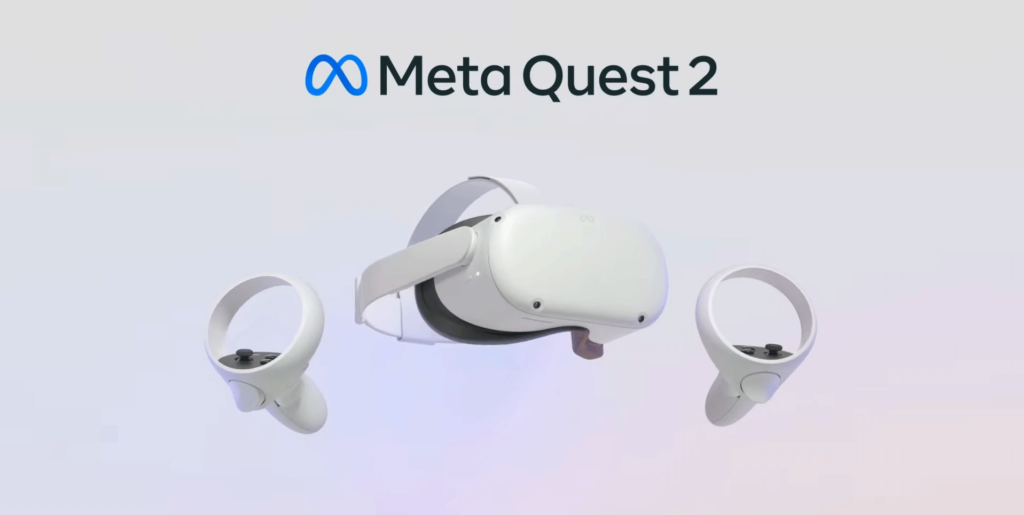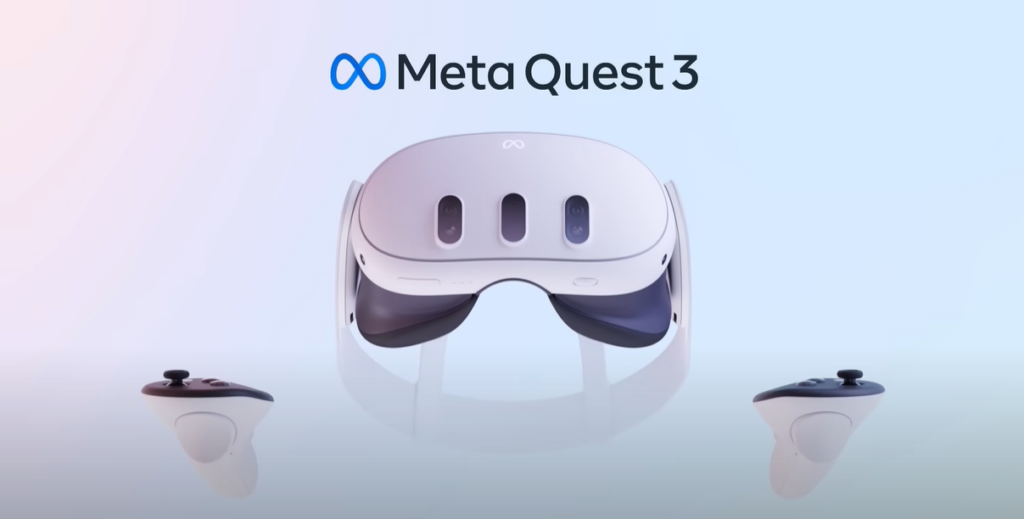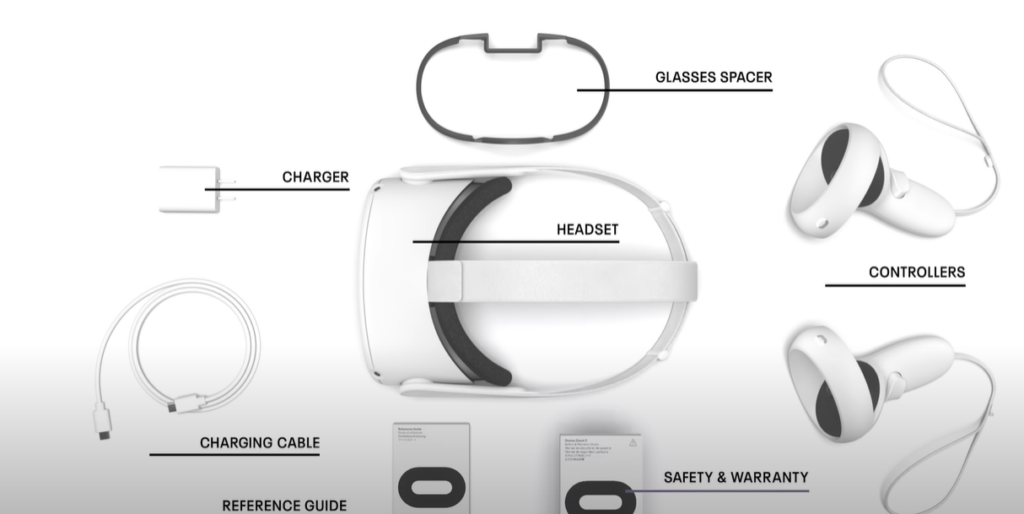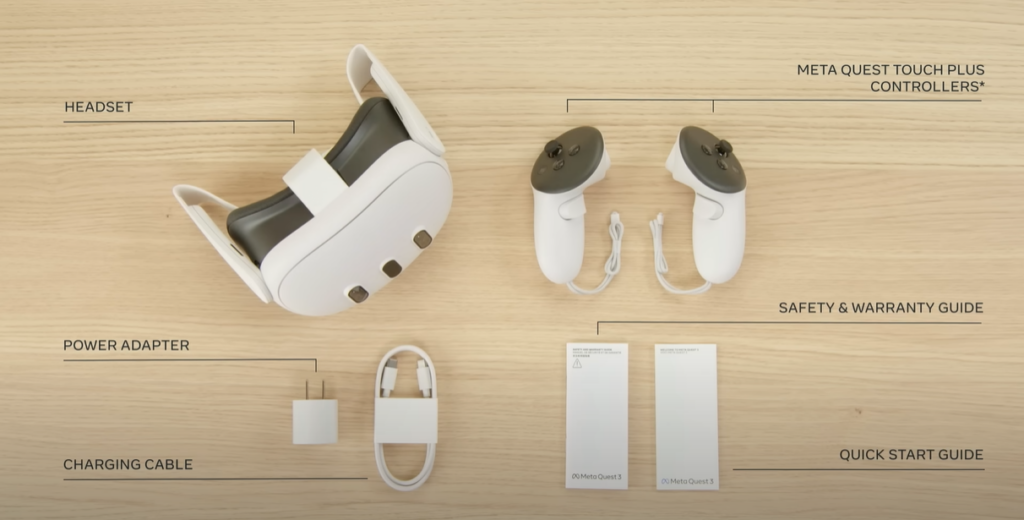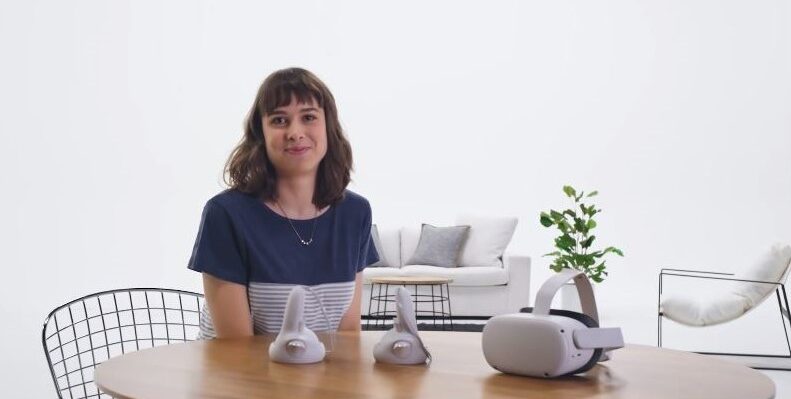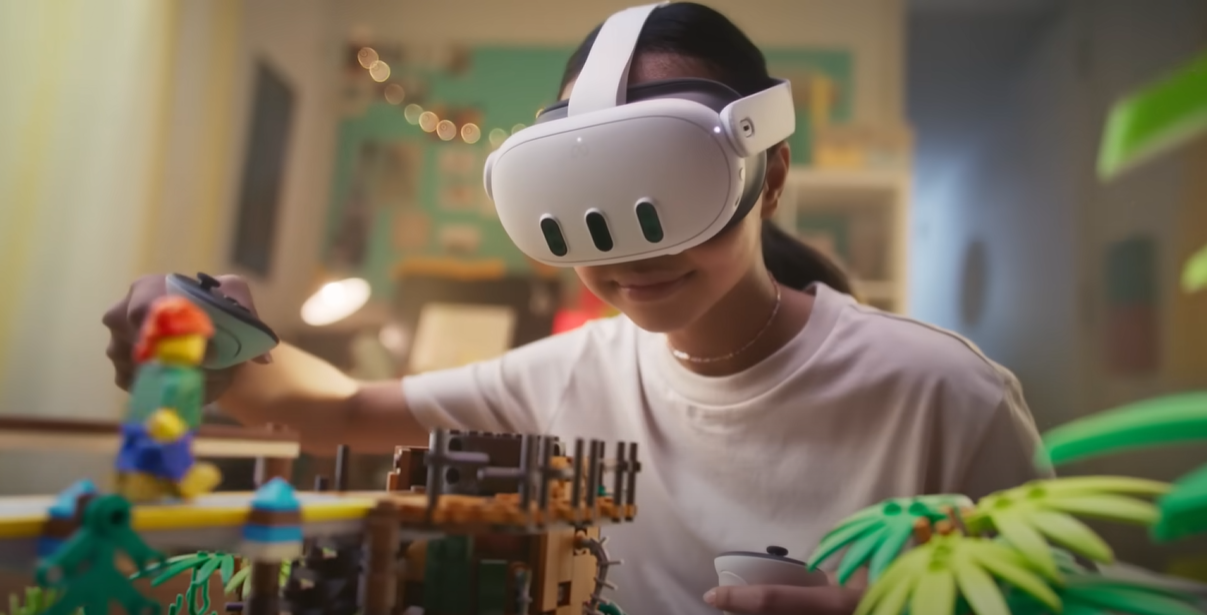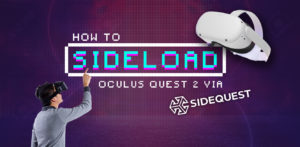This is it, the final showdown between Quest 2 and Quest 3! If you currently possess a Quest 2, you may be debating whether or not to upgrade to the brand-new Quest 3 this fall. Having launched on October 10th, 2023, the Quest v3 may very well be the ultimate Christmas stocking filler this year for experienced VR users.
Or maybe you’ve never tried virtual reality before and are at a crossroads trying to figure out which headset is right for you. So that you may make a well-informed choice, we’ll go over the major improvements that Meta Quest 3 has over Meta Quest 2. Let’s go into the specifics then!
Quest 2 vs Quest 3: The Price Factor
- Photo from Meta
- Photo from Meta
When deciding whether or not to purchase a new product, price is typically the deciding factor. The 128GB version of the Meta Quest 3 costs $499, an increase of $200 above the price of its predecessor. The Quest 2 256GB retails for $429, while the 128GB variant has been reduced to $299 since June.
The Quest 3 may cost more than the Quest 2, but it’s worth it because of all the upgrades. For this reason, the Quest 3’s higher price tag is justified by the superior performance and user experience it provides.
Comparison of Meta Quest 2 and 3 Specifications
QUEST 2 SPECS
Qualcomm Snapdragon XR2 processor.
LCD displays.
The individual pixel count is 1832 x 1920.
Supported Frame Rates: 60, 72, and 90 Hz
FOV: around 90-100 degrees
Disk space: 128GB and 256GB
RAM: 6 GB
Two to three hours of battery life
Measures 7.4 by 10.1 by 20.3 inches
Black-and-white reality see-through, virtual reality passthrough
QUEST 3 SPECS
Qualcomm Snapdragon XR2 Gen 2.
LCD pancake lens displays.
The per-eye resolution is 2064 x 2208.
Framerate: 90 to 120Hz.
One hundred degrees of peripheral vision.
Sizes of 128GB and 512 GB.
Total RAM: 8GB.
Two to three hours of battery life
The weight is comparable to that of Quest 2.
Passthrough for augmented and virtual realities; full-color
Quest 2 vs. Quest 3 Specs: Results
It is unknown which specific Qualcomm chipset the Meta Quest 3 employs, however, it is known that it is at least as recent as the Snapdragon XR2+. Quicker app loading and navigation are a result of this change. The Quest 3 will also provide a more rapid gaming experience than the Quest 2. The Quest 3’s Snapdragon XR2 processor, Meta says, provides “twice the graphical performance” of the Quest 2’s. This implies that Quest 3’s virtual reality experience will look more lifelike and vivid.
Quest 2 vs Quest 3: Displays
The Quest 2 has a passable screen, but there are better headsets out there. For example, the PSVR2 has two 4K OLED screens. Similar to the Meta Quest Pro, the Quest 2 provides a resolution of 1832 x 1920 for each eye. Meta has said that the Quest 3 combines their highest resolution display with pancake optics, resulting in content that looks better than ever, while the exact screen specifications have not yet been formally released.
It has been said that the Quest 3 will feature a wider FOV than the Quest 2. The enhanced field of view (FOV) and better resolution display of the Quest 3 should contribute to a more convincing virtual reality experience. Its LCD features 4,128 × 2,208 pixels in total, or 2,064 x 2,208 pixels for each eye, which is around 30% more resolution than the Quest 2 as mentioned on Best Buy.
Quest 2 vs Quest 3: Mixed Reality Features
When it comes to mixed reality, Quest 2 and Quest 3 are very different from one another. The Quest 3 is the pinnacle of mixed reality, far surpassing the capabilities of the Quest 2’s black-and-white video Passthrough for location tracking. The Passthrough resolution will be 10 times that of Quest 2 thanks to the two 4MP RGB color cameras mounted on the front visor. You’ll see truer colors and a more realistic representation of your surroundings as a result.
The Quest 3 is also the first smartphone to use a front-facing depth sensor. This sensor aids in the automatic room mapping performed by the Smart Guardian system. This allows for more natural interactions between virtual and physical objects. If you mark out real-world things in VR, for instance, the virtual ball will bounce off of them in the same way a real ball would. We will cover mixed reality on Quest 3 further within this article.
Quest 2 vs Quest 3: Design
- Photo from Meta
- Photo from Meta
The Quest 3’s design is drastically different from that of the previous model, the Quest 2. The Quest 3 is more streamlined and elegant, giving it a futuristic appearance. Comfort during long use should be improved by the addition of an adjustable elastic fabric material to the head strap. Padding has been added to the back of the Quest 3 to make wearing it for long periods more bearable. In our play sessions, we found it comfortable to wear for long sessions with little to no discomfort. This is a stark contrast to the stock strap on the Quest 2 which became uncomfortable almost immediately.
Quest 2 vs Quest 3: Audio
The Quest 2 has built-in speakers, and they produce serviceable sound for the most part. You can listen with your headphones or earphones in if you’d like some privacy. The Quest 2 does not include built-in earbuds. On the other hand, the Quest 3 has sleek, high-fidelity speakers built right in. These speakers were created in tandem with Logitech to provide more directed and immersive sound without the use of headphones. High-quality sound reaches your ears without bothering those around you.
Quest 2 vs Quest 3: Storage
Both of the Quest 2’s storage options, 128GB and 256GB, should be more than enough for the vast majority of consumers. If you enjoy downloading a lot of games and have a vast virtual reality library, you may find yourself struggling with space limitations. The Quest 3 comes with two storage options of 128 GB and 512GB. There is currently no confirmation of any further external storage possibilities, however, those with vast VR libraries may find that the Quest 3 512GB model is a more suitable choice.
Quest 2 vs Quest 3: Batteries
The Quest 2 has a conventional 2- to 3-hour battery life for virtual reality headsets. The Quest 3 has a comparable battery life, so you will still need to schedule your VR sessions and take advantage of charging pauses.
Quest 2 vs Quest 3: Game Library
The vast collection of virtual reality (VR) games and applications is a major strength shared by both Quest 2 and Quest 3. They share the same operating system, so you may use either one to access the same library of games and applications. Some games will have automatic graphical and performance enhancements when running on the more powerful Quest 3. Also, some game developers are going to implement MR passthrough options in their games. Les Mills Body Combat for example has this feature enabled from day 1 on Quest 3 allowing you to exercise in mixed reality at no extra cost. Speaking of mixed reality …
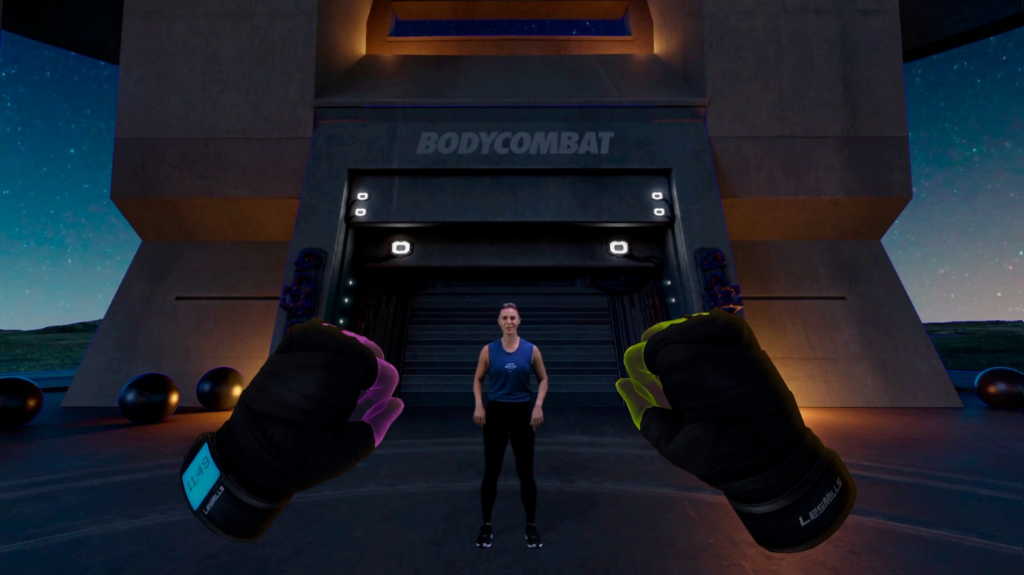
Photo from Meta
Mixed Reality- Making a Big Difference on Quest 3
The use of mixed reality in video games is one of the most exciting and novel features of Meta Quest 3. This innovative addition improves upon standard virtual reality (VR) gaming by fusing the real and virtual worlds in a way that is both novel and compelling.
Full-Color Passthrough
The Meta Quest 3’s Passthrough is a fully colored step forward for augmented reality. The Quest 3’s mixed reality mode provides more lifelike and colorful images of the actual world than its predecessor’s black-and-white passthrough. The front visor of the headgear houses two 4MP RGB color Passthrough cameras. Because of this innovation, virtual reality games can now achieve a level of immersion never before possible.
Automatic Room Mapping
The revolutionary depth sensor found in the Quest 3 enables automatic mapping of your environment via the Smart Guardian system. The headset can identify and interact with real-world items thanks to intelligent room mapping, making the real world a vital part of the gaming experience. Put virtual things on a physical table, and the Quest 3 will make sure they behave naturally. The potential for innovative and engaging gameplay is greatly expanded by the seamless blending of the digital and physical worlds in this way.
Realistic Interactions
When playing Quest 3 mixed reality games, the line between the digital and physical worlds blurs. With the incorporation of real-world objects, players can engage in more lifelike interactions with the game world. A virtual basketball can be made to bounce off a physical table, and the same things can be used to block virtual attacks. The strategic depth and realism of your gaming experiences will be greatly enhanced by these interactions.
Limitless Creative Potential
The Quest 3’s mixed reality features aren’t just for playing games; they can also be used to make original content. The room mapping and Passthrough features in full color allow artists and makers to realistically incorporate physical spaces into their digital works. The possibilities for innovative expression this opens up range from constructing interactive art pieces that blur the line between the digital and physical worlds to creating instructional content that does the same.
Multiplayer Mixed Reality Gaming
With Quest 3, users may play with their friends or people all over the world and have their own unique, mixed-reality gaming experiences to compare and contrast. Team up, compete against each other or work together in a new and interesting way with synchronized real-world and virtual interactions. The potential for more intimate and intense social experiences is realized in mixed-reality multiplayer gaming.
In conclusion, the Meta Quest 3’s hybrid reality gaming system is revolutionary. It combines the virtual and real worlds in a way that has never been seen before in virtual reality games. The Quest 3’s mixed reality gaming capabilities are a huge step forward in immersive entertainment, allowing for everything from realistic interactions with real-world items to boundless creative potential. The Quest 3’s mixed reality features offer a fun and engaging environment for anyone interested in gaming, content creation, or exploring the limits of reality.
Quest 2 vs Quest 3: Conclusion
If you currently have a Quest 2, you may be wondering if you should upgrade to the newest Quest 3. Faster processing, higher-quality images, cutting-edge mixed reality features, enhanced audio, and a more streamlined design are just a few of the many enhancements included in the Quest 3. Whether or not an upgrade is necessary depends, however, on your circumstances and tastes. If you’re a fan of virtual reality and want the cutting edge, go no further than the Quest 3.
If you’re just getting started with virtual reality or you’re happy with the way your Quest 2 performs, it’s still a great device for VR games and experiences. The Quest 2’s price drop makes it a more attractive entry-level choice. The Quest 2 still offers many of the same virtual reality (VR) experiences and games at a reasonable price.
If you want the best and most advanced virtual reality experience, the Quest 3 is an appealing option because it represents a stride forward in the industry. The Quest 2 isn’t a slouch, either, and it’s still a good choice for those on a tight budget or who don’t need very advanced features. The fascinating world of virtual reality gaming and experiences awaits, so make your choice based on your priorities and budget. If your budget allows it though, the Quest 3 is the superior choice!
Frequently Asked Questions (FAQ) – Meta Quest 3 vs. Meta Quest 2
- Photo screenshot from Meta Quest official YouTube channel
- Screenshot from This is Meta Quest 3 YouTube
What is the Meta Quest 3, and how does it compare to the Meta Quest 2?
The Meta Quest 3 is the company’s newest and most advanced virtual reality (VR) headset. The Meta Quest 2’s replacement boasts improved aesthetics, functionality, and performance. There is an in-depth comparison of the two headsets in this post.
When was the Meta Quest 3 released, and where can I get it?
On 10th October 2023, we saw the release of The Meta Quest 3. It’s for sale at authorized merchants and through the official Meta distribution network. To find out where to buy Meta, visit their website or a nearby electronics retailer.
How does the price of the Meta Quest 3 compare to the Meta Quest 2?
The Meta Quest 3 costs more than its predecessor, the Meta Quest 2. Quest 2 128GB models have been sold for as little as $299, whereas the Quest 3’s base 128GB model costs $499.
What are the key specifications of the Meta Quest 3 and Meta Quest 2?
The essay details every aspect of both headsets, from the hardware to the software, the battery life to the resolution of the screen, and everything in between.
How does the performance of the Meta Quest 3 differ from the Meta Quest 2?
The upgraded chipset and additional RAM in the Meta Quest 3 allow for faster operation. With “twice the graphical performance” of the Quest 2, virtual reality experiences become more lifelike and detailed.
What are the differences in the display and visuals between the Meta Quest 3 and the Meta Quest 2?
The higher resolution display and pancake optics of the Meta Quest 3 help to reduce visual artifacts, resulting in a more immersive viewing experience. The Quest 3’s display is more detailed and has a wider viewing angle, making the game feel more real.
How do the mixed reality features of the Meta Quest 3 compare to the Meta Quest 2?
Significant mixed reality features are introduced with the Meta Quest 3, including a full-color passthrough and a depth sensor for improved room mapping. It improves upon the Quest 2’s core mixed reality functionality by facilitating more natural interactions between virtual and real items.
What changes can we see in the design of the Meta Quest 3 compared to the Meta Quest 2?
The Meta Quest 3 is more compact and lightweight than its predecessors because of the use of pancake optics. It has a revised strap system, improved weight distribution, and a wheel to change the distance between the wearer’s eyes. Port relocation and accessory support have also been updated in the design.
How do the controllers of the Meta Quest 3 differ from those of the Meta Quest 2?
Meta’s updated Touch Plus controllers for the Quest 3 are easier to grip and provide better haptic feedback. Their controller-free hand tracking is improved by their full-body LED design.
Is the Meta Quest 3 backward-compatible with games from the Meta Quest 2?
There are more than 500 games available for the Meta Quest 2, and the Meta Quest 3 is fully compatible with them all. While the Quest 3 currently does not have any exclusive games, its powerful features may encourage the creation of such titles in the future.
Which headset is better for me, the Meta Quest 3 or the Meta Quest 2?
Your personal preferences and requirements should guide your decision between the two headsets. The benefits of the Meta Quest 3, including its mixed reality capabilities and enhanced performance, are discussed in the article. The Quest 2 is still a good alternative, especially if you’re on a tighter budget.
